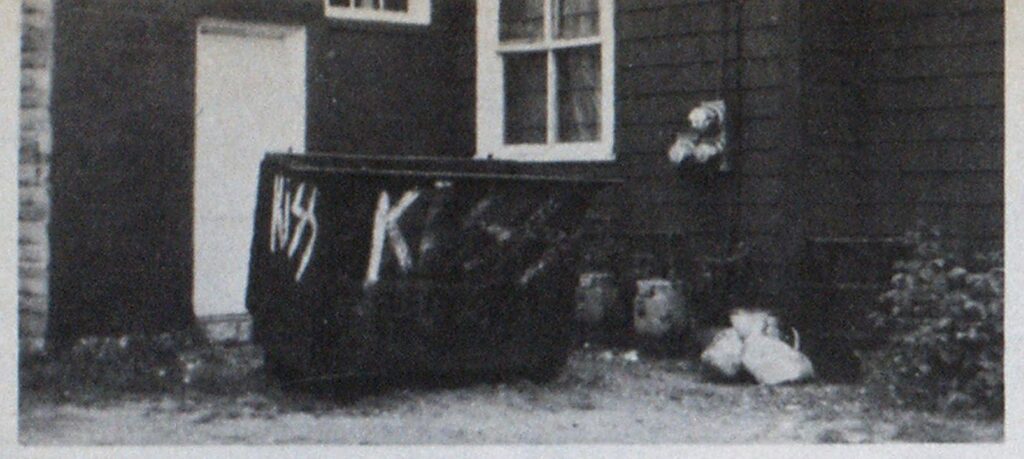
Trash Containers Create Fire Threat


features
A fire incident, looked upon as a nuisance call in the past, is becoming more frequent and potentially dangerous. Fires in trash containers placed close to buildings create an exposure that has—and is—resulting in a threat to life and structure.
Trash container fires are usually set. Rather than pull a false alarm to harass the fire department, a vandal will light off the rubbish and then have a legal reason to pull a box or call in an alarm.
The occupant of the property may set fire to the container contents to make room for more trash between the service company’s collection days.
In either case, the acts constitute arson. Realistically, law enforcement officials plagued with court calendars overburdened with serious criminal offenses cannot give much consideration to the destruction of refuse. Therefore, any deterent has been removed and the act can be done with impunity. Even the fire service has a tendency to take a frivolous attitude, considering trash container fires a nuisance rather than the serious threat they can pose.
The seriousness depends on the placement of the container in relation to surrounding structures. The location of a container is usually influenced by the building occupant’s desire for convince in removing trash from the building and the service truck driver’s desire for access with a minimum of maneuvering. Neither of these considerations takes into account the possibility of a fire in the container exposing the building.
During company in-service inspection and pre-fire planning, not enough at tention is given to what may happen if a fire starts externally, such as in a trash container, and enters a building. The pre-fire planning must always include the possibility of fire entering a structure from an external source—particularly when trash containers are located so that they expose the building.
A serious mistake is made if the initial attack line is directed at the container so that the fire is pushed into the building. The initial objective of the attack must be to protect the structure. If the container has a cover, it should be closed so time can be bought to check for fire extension into the building. An immediate interior as well as exterior check of the exposed walls must be made at all floor levels with particular emphasis on the soffitt, underroof or attic areas.
If the container is of the packer type with access inside the building, the initial line should be brought into the building to the loading area. This type usually has an opening only on the end. If it can be forced open, a solid wall of discarded material ther$ will defy penetration by hose streams and unloading it may take too long to be practical. The only solution may be to phone the rubbish company to have a service truck remove the container. However, fires usually occur after normal business hours and getting a truck to respond may be quite difficult.
I have found that threatening to cut open the container with an acetylene torch usually speeds up response.
The contents of the container usually reflect the type of building occupancy. Too often, fire fighters do not take trash container fires seriously. Any material, hazardous or otherwise, that can be found in the building will be found in the container. Any material that poses a threat to the fire fighting force should be expected in the container. There are rarely laws that cover what may not be put into a container, and even if such laws exist, they are unenforcible. Any hazardous material discarded will be discovered only when the container is emptied and then pinpointing where a particular hazardous material originated is virtually impossible.
The dangers of trash container fires can be minimized by doing the following:
- A local ordinance should be enacted to regulate the placement of trash containers, with emphasis on building exposure.
- A record of such fires should be kept to pinpoint the causes. If it is vandalism, the police should be brought into the matter before the vandal progresses to vehicles, vacant structures and finally occupied structures. If the occupant is setting the fires, both the police and his insurance carrier should be brought into the matter.
- Fire fighters should be trained to handle trash container fires with emphasis on the personnel hazard as well as the possibility of fire spreading into an adjacent building.




